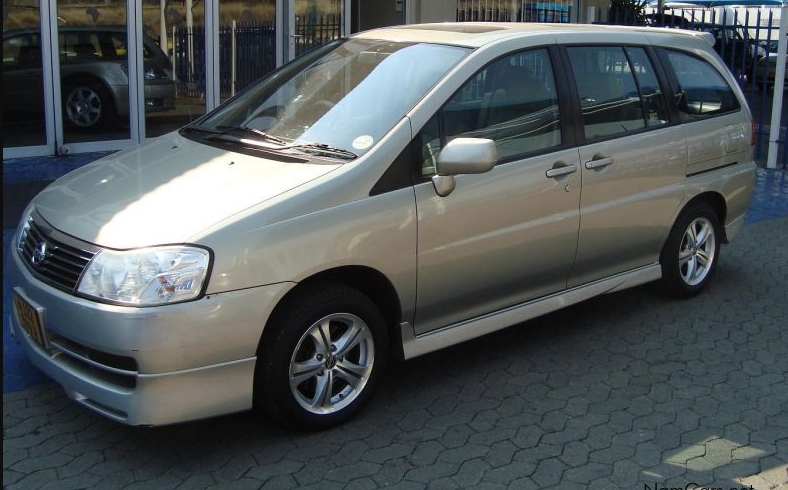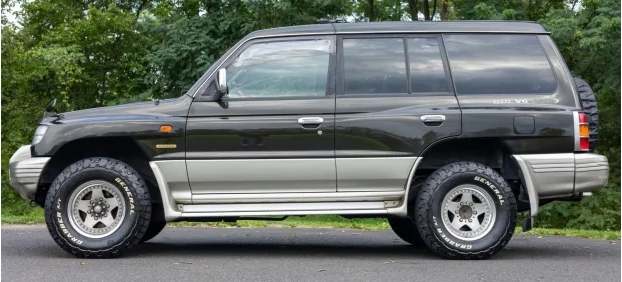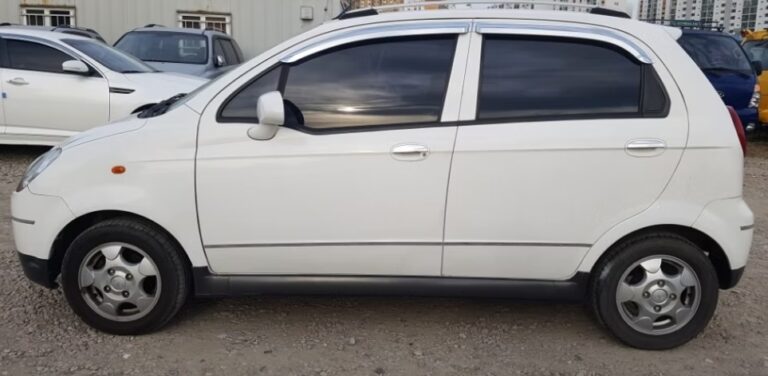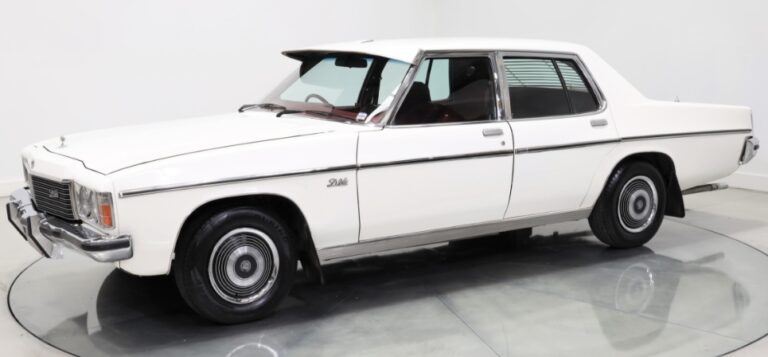The Unsung Pioneer: The Evolution of the Nissan Prairie
In the grand narrative of automotive history, the invention of the minivan is typically credited to two key players: the Dodge Caravan/Plymouth Voyager in North America and the Renault Espace in Europe. Both debuted in 1984 and irrevocably changed the landscape of family transportation. Yet, two years prior, on the other side of the globe, a vehicle launched that not only predated them but did so with a design so audacious and forward-thinking that its influence is still felt today. This vehicle was the Nissan Prairie, a boxy but brilliant experiment that stands as one of the true, if often overlooked, pioneers of the modern multi-purpose vehicle (MPV). Its evolution over three distinct generations tells a fascinating story of innovation, market adaptation, and the gradual refinement of a revolutionary concept.
First Generation: The Radical Innovator (M10, 1982-1988)
Launched in August 1982, the first-generation Nissan Prairie (M10) was an automotive bolt from the blue. Its conceptual genesis lay not within Nissan’s own studios, but in the 1978 Lancia Megagamma concept car penned by the legendary Giorgetto Giugiaro. The Megagamma proposed a “one-box” design with a tall roofline and a compact footprint built on a passenger car platform—a radical departure from the van-based people carriers of the era. While Lancia hesitated, Nissan embraced the vision wholeheartedly, basing the Prairie on the versatile front-wheel-drive platform of its Sunny/Stanza models.
The M10’s most defining and celebrated feature was its complete lack of a B-pillar. When the conventional front-hinged door and the rear sliding door were opened on the same side, they revealed a single, cavernous 1.5-meter-wide aperture. This provided unparalleled access to both the front and rear seats, making it incredibly easy for passengers to enter and exit or for parents to load children into car seats. To compensate for the potential loss in structural rigidity, Nissan heavily reinforced the floorpan, roof, and door structures. The result was a design that felt impossibly open and airy.
The interior was a masterclass in space efficiency. Despite its modest exterior dimensions, the Prairie offered flexible seating for five, with some configurations allowing the front seats to be swiveled around or folded completely flat with the rear bench to create a makeshift double bed—a feature heavily promoted in its marketing.
Models and Trim Levels (M10):
Throughout its run, the M10 Prairie was offered with a straightforward range of powertrains and trims, primarily for the Japanese Domestic Market (JDM), with variations for export.
Initial Powertrains: The Prairie launched with a 1.5-liter (E15S) inline-four carburetor engine, which was adequate but uninspiring. This was soon supplemented by a more capable 1.8-liter (CA18S) engine.
Facelift and Expansion (1985): A significant mid-cycle refresh in 1985 brought a smoother, more aerodynamic front end, updated interior trim, and, most importantly, a new flagship engine: the 2.0-liter (CA20S). For European markets, a 2.0-liter diesel (LD20) was also available.
The 4WD Revolution: A game-changing addition was the optional part-time four-wheel-drive system. Paired with its high roof and flexible interior, the Prairie 4WD became a precursor to the modern crossover, offering all-weather capability in a practical family package.
JDM Trim Levels:
JW / JW-L: The base models, offering the core functionality.
JS / JS-L: Mid-range trims with additional comfort features.
JW-G / JS-G: Higher-spec models, often featuring better upholstery, power features, and the larger engines.
Export Markets: Names and trims varied. In the United States, it was sold as the Nissan Stanza Wagon from 1986 to 1988, typically in XE and GXE trims. In Europe, it was initially badged as a Datsun Prairie before the Datsun brand was phased out in favor of Nissan.
Despite its brilliance, the M10 was a niche success. Some potential buyers were wary of its pillarless design from a safety perspective (though it met all crash standards of the day), and its boxy styling was not universally loved. Nevertheless, it laid the groundwork for everything that was to come.
Second Generation: The Conventional Competitor (M11, 1988-1998)
By the late 1980s, the minivan market had exploded. Chrysler and Renault had established the dominant template, and Nissan knew it needed to adapt. Launched in September 1988, the second-generation Prairie (M11) was a direct response to this new reality. It toned down the radicalism of its predecessor in favor of a more refined, mainstream appeal.
The most significant change was the return of the B-pillar. While this sacrificed the M10’s incredible open-air access, it provided tangible benefits in body rigidity, crash safety performance, and a reduction in squeaks and rattles, addressing the key criticisms of the first generation. The M11 retained a single sliding rear door (on the passenger side for right-hand drive models and the curb side for left-hand drive markets), maintaining a key element of its MPV identity.
Styling was softened considerably. The sharp, angular lines of the M10 were replaced with the rounded, more aerodynamic aesthetic popular in the late 80s and early 90s. Built on the larger Nissan Bluebird (U12) platform, the M11 was longer and wider, offering a more spacious seven-seat interior option and a significantly improved ride quality.
Models and Trim Levels (M11):
The M11’s decade-long production run saw a wider array of options and a significant mid-life update.
Powertrains: The 2.0-liter CA20S engine was carried over, but the star of the show was the new 2.0-liter SR20DE engine. This DOHC, 16-valve fuel-injected unit was vastly more powerful and refined, transforming the Prairie’s driving experience. A 2.4-liter (KA24E) engine was primarily used for the North American market. The diesel option was updated to the CD20.
Drivetrain: The M11 featured both front-wheel-drive and a more sophisticated full-time 4WD system known as ATTESA (Advanced Total Traction Engineering System for All-Terrain), borrowed from Nissan’s performance models, which distributed torque as needed for superior traction.
Name Game: In North America, the M11 was marketed as the Nissan Axxess from 1990, replacing the Stanza Wagon. It was a short-lived but well-regarded competitor to the Mitsubishi Expo LRV. In Europe, it was known as the Nissan Prairie Pro.
The “Prairie Joy” Facelift (1995): A major update in 1995 saw the model rebranded in Japan as the Nissan Prairie Joy. This version featured a completely redesigned front end with large, friendly-looking round headlights, a new grille, and updated taillights. More importantly, it incorporated modern safety features like a driver’s side airbag and optional ABS brakes.
JDM Trim Levels:
J5 / J7 / J8: These designations denoted the seating capacity (5, 7, or 8 seats).
PM / PL: Common trim grade identifiers.
Royal: A high-end luxury trim, featuring premium upholstery and advanced features.
Special editions like the L Selection and Cruise package were also offered.
Nissan Axxess (North America) Trims:
XE: The well-equipped base model.
SE: The sportier, top-tier model, often featuring the 4WD system and additional luxury items.
The M11 was a more commercially successful vehicle than its predecessor. By conforming to market expectations while retaining core MPV strengths, it found a broader audience and solidified Nissan’s position in the growing people-carrier segment.
Third Generation: The Modern Successor (M12, 1998-2004)
For its third and final act, the Prairie name was officially retired in Japan. Launched in November 1998, the M12 generation was christened the Nissan Liberty. This rebranding signified a clean break, positioning the vehicle as a thoroughly modern, tech-forward family minivan. While the Prairie lineage was clear, the Liberty was a ground-up redesign.
The M12 embraced the future of minivan design. It was sleeker, taller, and more spacious than ever, built on Nissan’s modern MS platform. Its most significant practical upgrade was the inclusion of dual sliding rear doors, finally providing the ultimate convenience that its pillarless ancestor had hinted at. The driver-side sliding door was often power-operated, a premium feature at the time.
Technologically, the Liberty was a leap forward. The standout feature was the widespread adoption of Nissan’s Hyper CVT (Continuously Variable Transmission). This gearbox provided exceptionally smooth, seamless acceleration and improved fuel efficiency, perfectly suiting the vehicle’s relaxed, family-oriented mission.
Models and Trim Levels (M12):
The Liberty focused on refinement, safety, and technology, with a clear trim hierarchy.
Powertrains: The reliable 2.0-liter SR20DE engine was carried over initially, paired with either the Hyper CVT in 2WD models or a conventional 4-speed automatic in 4WD models. A turbocharged version, the SR20DET, was even briefly offered in the high-performance “GT4” trim, creating a true sleeper minivan. Later in its life cycle, the
SR engine was replaced by the more modern and efficient 2.0-liter QR20DE.
Trim Levels (JDM):
X: The standard model, which was very well-equipped with features like air conditioning, power windows, and dual airbags.
G: A step-up trim that added more luxury features and appearance packages.
S: A value-oriented package.
Highway Star: A popular, sporty trim level featuring an aggressive body kit, larger wheels, and a bespoke interior. This trim would become a staple across Nissan’s MPV lineup.
Rider: A custom, high-end version produced by Nissan’s subsidiary, Autech, featuring a distinctive chrome grille, unique wheels, and a luxurious interior.
GT4 Highway Star: The aforementioned turbocharged 4WD performance model, a true enthusiast’s choice.
The Nissan Liberty enjoyed strong sales in Japan, successfully competing against rivals like the Honda Stepwgn and Toyota Noah. It was never officially exported to North America or Europe, as Nissan was focusing on vehicles like the Quest and Serena for those markets.
.
THIS is GOOD stuff if your car is in need:

.
Legacy of a Pioneer
The Nissan Liberty’s production ended in 2004, and its lineage was carried on by the Nissan Lafesta. The Prairie nameplate was gone, but its spirit lived on.
The evolution of the Nissan Prairie is a microcosm of the MPV’s own journey. It began as a daring, almost eccentric concept (M10) that prioritized pure innovation over mass appeal. It then matured into a pragmatic, polished competitor (M11) that learned from the market. Finally, it evolved into a sophisticated, modern family hauler (M12) that perfected the formula. While the Chrysler Voyager may have won the sales race and the Renault Espace the design awards, the Nissan Prairie got there first, and with a courage and ingenuity that deserves to be celebrated. It was the box that thought outside the box, and in doing so, it helped build the template for the family car of the future.







